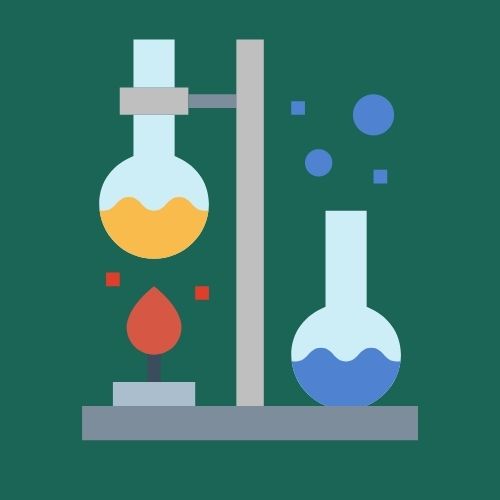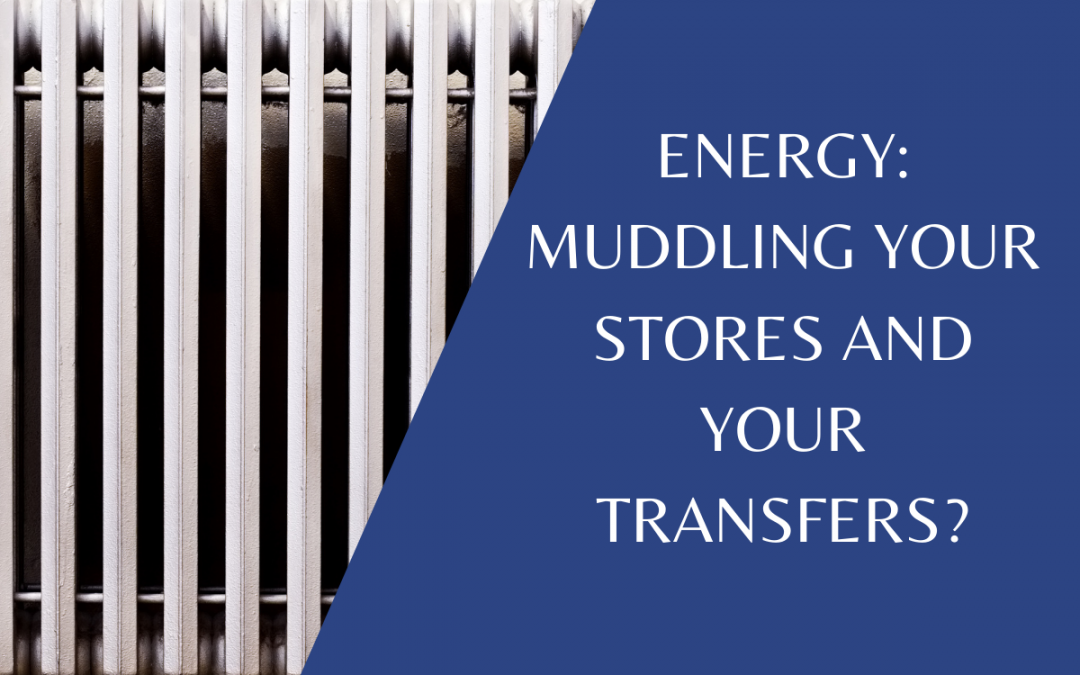Can you explain the difference between an energy store and an energy transfer?
Do you always get in a muddle when answering questions in class on energy?
Would you like to get the energy topic nailed before you start your GCSEs?
This blog covers the key ideas we feel you need to have grasped during KS3 to get a good foundation for moving on to KS4 Physics.
📗 Energy Stores and Energy Transfers
Energy is a topic taught early in the KS3 curriculum, often year 7 and it is one many struggle with. The difference between an energy store and an energy transfer can be confusing for many. You need to be clear that there are seven stores and four transfers and the first point to remember is energy can be transferred to stores. If you think of it like this you can then work out what you are being asked.
Often you will be given a simple image or scenario and asked to name the energy stores present or to describe the transfer taking place. A common example is a lighted candle in a jar. You would be expected to say that at the start the energy store is chemical, this is transferred by light and at the end, the energy store is thermal as heat is released.
It is a good idea to note down some of the examples you are given at school and from revision guides to test yourself with regularly. Other transfer experiments that are used are a toy car rolling down a ramp, a hairdryer and a simple electrical circuit.
📘 Conduction and Radiation
To understand energy and its transfers it is helpful to know the difference between conduction and radiation because the transfer can occur by heating. The best way to learn and explain these is through diagrams. Using particle diagrams to represent conduction will allow you to show what you mean with simple labels rather than getting lost in the terminology.
You can either do this with one diagram or in stages. Diagrams like this are essential to understanding the concept and help with testing for revision. Radiation can be explained with examples you experience every day. We find that linking it this way makes it easier to understand and remember. For example, explain radiation in terms of a radiator heating a room. Conduction is explained easily with particle diagrams and there are plenty of everyday examples around you. Try and explain conduction in terms of cooking food in a saucepan on a hob. Think about how the heat is transferred from the hob to warm the food in the saucepan.
📕Energy Conservation
This is a really important principle and the key to getting many questions right. You must remember that energy can never be made/created OR destroyed/lost only transferred. Often we see the wrong term used in explanations or answers, particularly the word made. In a test question, you will instantly lose marks if you say energy is destroyed or made, and it always surprises me how many times students make this mistake.
As part of energy conservation, you learn how to draw transfer diagrams, with these you label energy stores and the amount of energy in Joules (J) or Kilojoules (KJ). These diagrams are called Sankey Diagrams and are used to show useful and wasted energy. It is a good idea to have a couple of common examples you know and can draw out, for example heating a pan on a hob.
📙Energy Resources
This part of the energy topic is the one we find that most students have a good understanding of already. You need to know the difference between Renewable and Non-renewable energy resources, be able to give the main examples and how they work. It is also useful at KS3 to know which ones are more commonly used and the benefits of each.
Be clear on what the three fossil fuels are, why they are running out and the effect they have on the environment. You learn about energy conservation in more detail in KS4 and are expected to be able to evaluate and compare different energy resources.
💡 One of the reasons we selected Energy for this blog is a good understanding of the subject will help you build the foundations for your KS4 Physics and in preparation for your GCSEs. It is a topic many find harder than they realise and some students don’t realise how hard they have found it until they answer test questions and get low marks. Hopefully, these tips will help with some pointers to make sure you are clear on what you need to know.
⭐️ If you need more help with the energy topic, our YouTube channel will be perfect for you!
KEEP UP TO DATE - DON'T MISS OUT!
Our regular newsletters are filled with helpful and interesting information to help you with your Science at school

